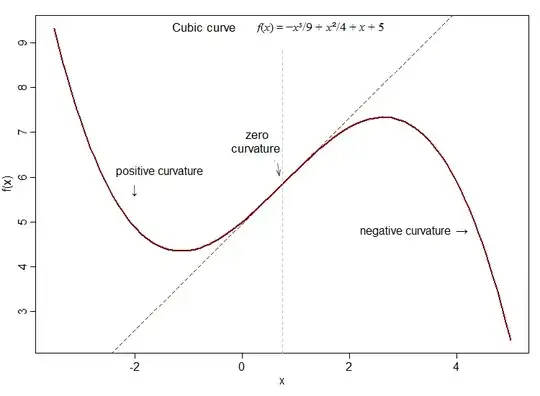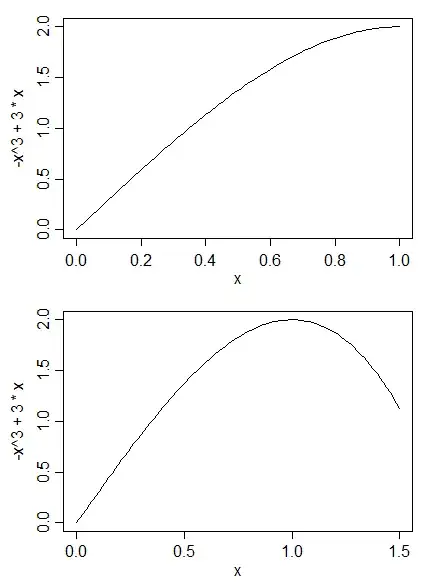I have fitted my stress-strain data with $y=ax^3+bx^2+cx+d$ and also added tangent lines as shown in figure below. I am interested to see the deviation of the fit from the linearity. I am not aware of any theory that can be used to find the tangent point (the point of deviation of the fit from the linearity). Hence, based on my visual inspection I somewhat decided my tangent point at added vertical lines. This method is of course raising question of reliability. So I am looking for suggestions how I can quantitively determine the points of deviation for all four data sets.
Your advice/suggestion would be highly appreciated!

Question update: The figure shows that there is a linear relationship at the beginning, but at some point (point of deviation from linearity), the linear relationship disappears and non-linear relationship prevails. I'm looking for a way to determine this point of deviation from linearity quantitatively, not as done by visual inspection. How do I do that?
(Sorry, not sure what should be the appropriate tag for this post!)

